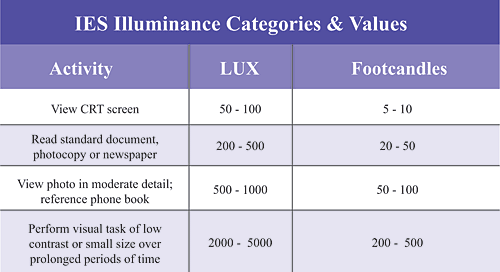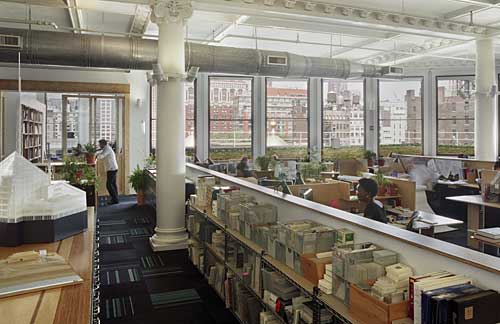Task Lighting Solutions: Their Economic and Ergonomic Benefits
Flux, Illuminance and Luminance
Total flux, in lumens, is the parameter that bulb manufacturers use when describing the total amount of light given off by a bulb in all directions. Lumens do not, however, tell us how much light will be received where it is needed. Illuminance, on the other hand, tells us how much light will reach a given surface. Illuminance is generally measured in lux, which is a short form for lumens per square meter of surface area, the metric equivalent of footcandles (which represent lumens per square foot). There are 10.76 lux in one footcandle, but the lighting industry typically rounds this factor to 10.0 for the sake of simplicity.
If we compare a lighting fixture to a shower head, then the lumen output, or total flux, is the rate of flow of water and illuminance is the amount of water collected in a bucket at a given time. The key point is that the same total flux can give different amounts of water in the bucket, simply by moving the bucket, or by changing the spray pattern or by changing any physical obstructions between the source and the bucket. Total flux doesn't specify how much illuminance will be provided where it's needed. This is true, in part, because the luminaire, reflectors, lenses and other optical media can greatly affect the flow of light from the source to the work surface. Failure to remember this is a frequent cause of poor lighting design, especially in retrofit applications.
|
For lighting designs, we should not assume that two lamps with the same lumen rating will each give the same amount of light where needed.
Thirty years ago, standards of the Illuminating Engineers Society of North America (IESNA) called for general office lighting in the range of 100−150 footcandles (1,000−1,500 lux). Huge, increasingly cubicled floorplates, often without any natural, outside illumination, were lighted, for the most part, by banks of 4-ft ceiling-mounted fluorescent troffers (recessed fluorescent fixtures) that, in too many cases, resembled stadium floodlights in their intensity.
|
|
By 2002, nearly all office tasks were being performed on desktop computers and average ambient light levels in the American workplace declined to one-third of 1970s levels. Today, ambient office lighting is likely to be in the range of 25−45 footcandles (250−450 lux), which is still far more light than is necessary for getting around the office or viewing a computer screen. According to IES, computers are best viewed in an environment where the ambient lighting is 5−10 footcandles (50−100 lux), whereas most reading of documents requires 20−50 footcandles (200−500 lux).











